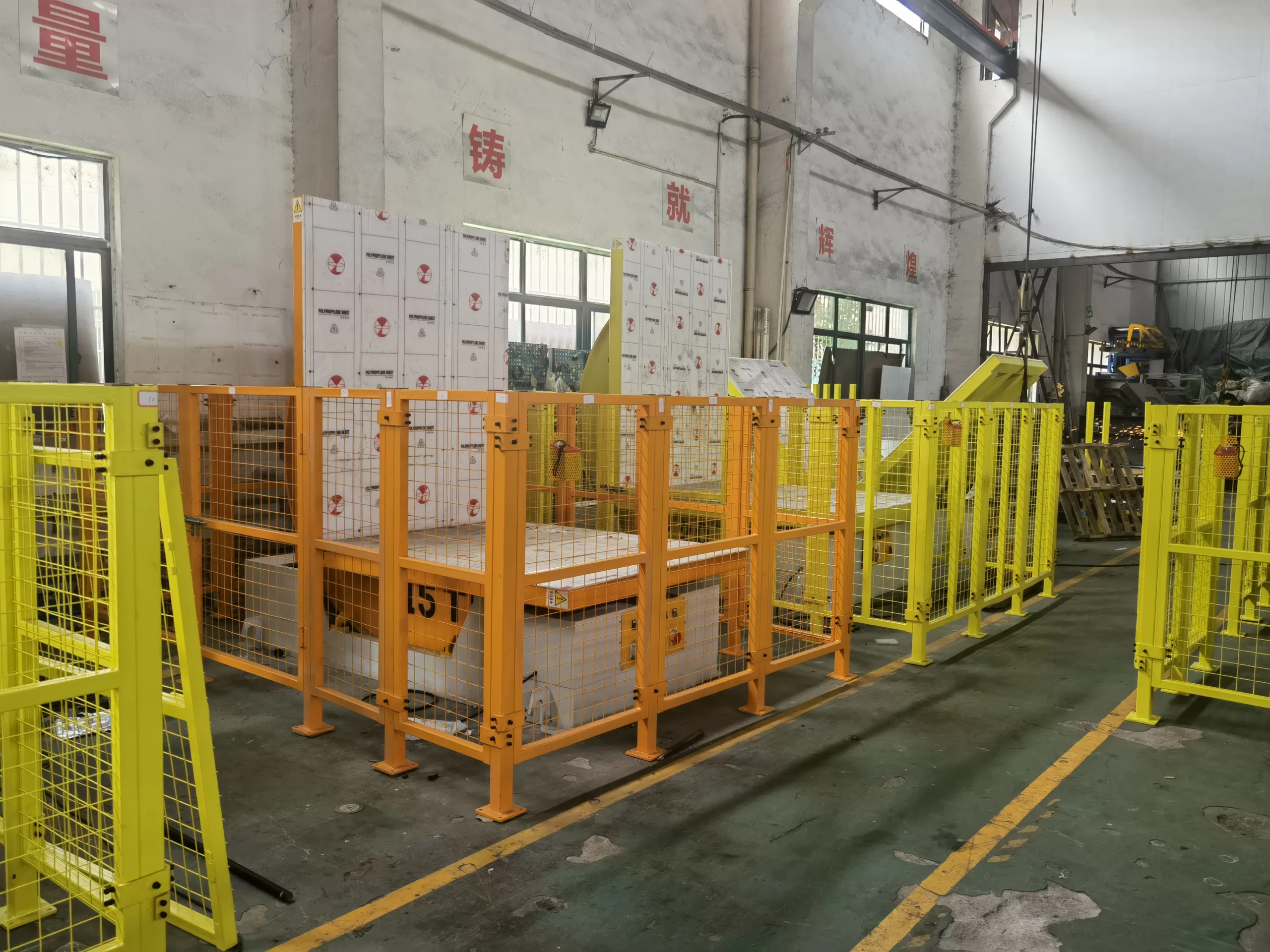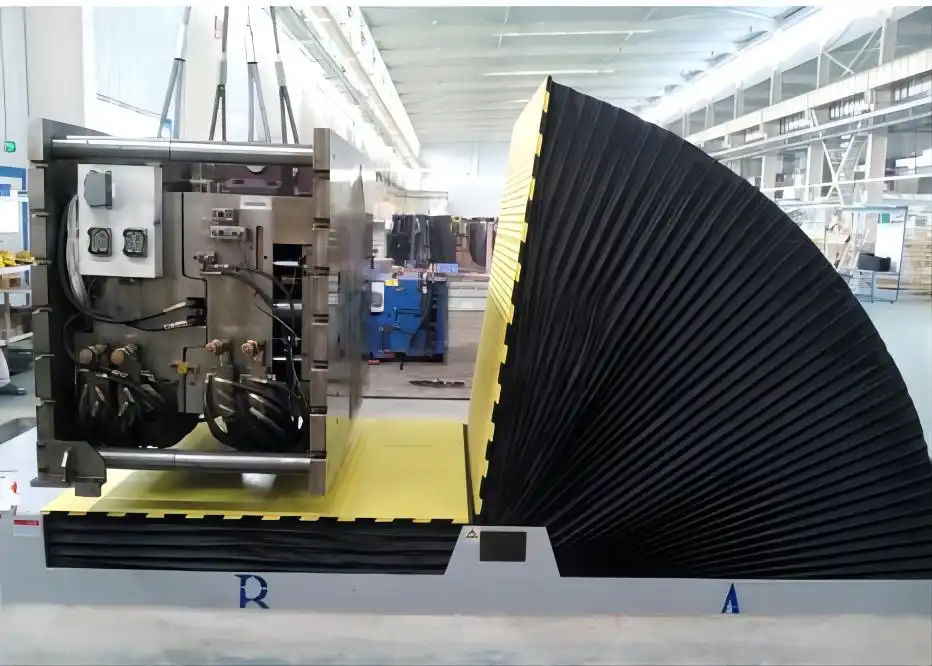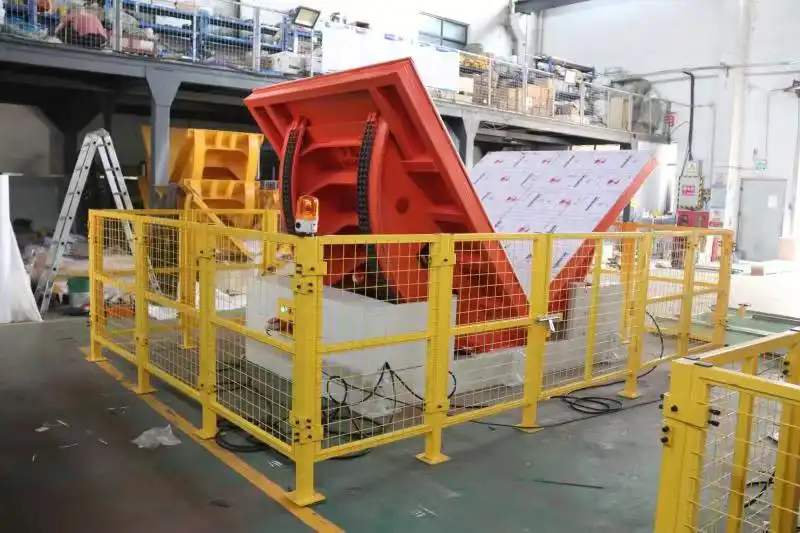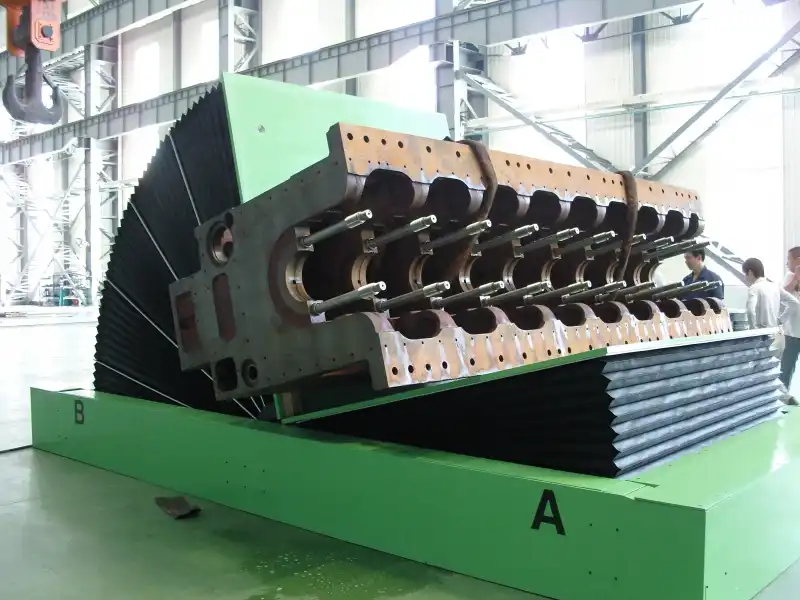Mold Flipper: What Service Model Keeps Uptime High for Indian Users?
Your production line is humming along, but then it happens. The mold flipper, a critical piece of equipment for safely turning heavy molds, suddenly stops working. Every minute it's down, your entire process grinds to a halt. You can feel the pressure mounting as deadlines loom and costs start to climb. This isn't just an equipment failure; it's a major disruption that threatens your productivity and profits. I’ve seen this scenario play out too many times in factories across the globe. But what if there was a way to almost eliminate this risk, especially in a demanding market like India?
The most effective service model to keep mold flipper uptime high for Indian users is a three-part strategy. It combines (1) a robust, locally-supported proactive maintenance program, (2) guaranteed availability of critical spare parts within the country, and (3) continuous, hands-on operator training. This approach moves beyond simple repairs and builds a resilient system that prevents failures before they happen.

This combination might sound straightforward, but the key is in the execution. Many companies focus on just one of these elements, but that leaves them vulnerable. A great maintenance plan is useless if you have to wait six weeks for a spare part from another continent. In my years of designing and building these machines, I've learned that true reliability comes from a holistic service model, not just a good machine. Let's dive deeper into each part of this strategy and see why it works so well for our clients in India.
What are the biggest uptime killers for mold flippers in India?
You’ve invested in a heavy-duty mold flipper, expecting it to be a workhorse. Yet, you find yourself dealing with unexpected breakdowns that bring your operations to a standstill. Each time it fails, it creates a cascade of problems. You have to reschedule work, your team is left idle, and you risk missing important customer deadlines. It's incredibly frustrating because you bought the machine to solve problems, not create new ones. Understanding the specific reasons these machines fail in the Indian industrial environment is the first step toward building a defense against downtime.
The biggest uptime killers for mold flippers in India are not usually catastrophic failures. Instead, they are a combination of harsh environmental factors like dust and voltage fluctuations, inconsistent lubrication and cleaning schedules, and minor operator errors that accumulate over time. These seemingly small issues are what lead to the vast majority of sudden and costly breakdowns.

A Deeper Look at Common Failure Points
From my experience working with numerous factories, the issues that cause the most significant downtime are often preventable. It's not about a single weak component, but rather the ecosystem in which the machine operates. Let's break down these "uptime killers" and how they specifically affect mold flippers in a busy Indian factory.
Electrical and Environmental Challenges
India's industrial power grid can be prone to fluctuations. Voltage spikes and drops are common in some areas. A mold flipper's control system, with its PLCs, inverters, and sensors, is sensitive to this instability. A sudden surge can fry a control board, and inconsistent voltage can cause motors to overheat or perform erratically. The environment itself is also a factor. High levels of dust and humidity can be a major problem. Dust can work its way into electrical cabinets, causing short circuits or overheating. It can contaminate lubricants, turning them into a gritty paste that accelerates wear on gears and bearings. Humidity can lead to corrosion on electrical contacts and structural components, weakening the machine over time.
The Human Factor: Operation and Maintenance Gaps
A mold flipper is a powerful machine, and improper use is a direct path to failure. One common issue I see is overloading. An operator, trying to save time, might try to flip a mold that exceeds the machine's rated capacity. This puts immense stress on the drive system, the chains, and the structural frame, leading to premature failure. Another issue is incorrect loading. If a mold is not centered properly on the platform, it creates an unbalanced load. This can strain the drive motors unevenly and cause excessive wear on the bearings and guide rollers on one side of the machine. These small operational errors, repeated daily, add up to major mechanical stress.
Neglect of Basic Maintenance
This is perhaps the most common and most frustrating uptime killer. Lubrication is the lifeblood of any mechanical system. Chains, bearings, and gearboxes all require clean, appropriate lubricant to function smoothly. I've visited plants where the maintenance schedule was "lubricate it when it starts making noise." By then, the damage is already done. Running a chain without proper lubrication is like running a car engine without oil. It will lead to rapid wear, stretching, and eventual failure. Similarly, routine checks and cleaning are often overlooked. A simple visual inspection can spot a loose bolt, a frayed wire, or a leaking hydraulic fitting before it becomes a catastrophic failure.
To put it clearly, here is a breakdown of these common issues:
| Uptime Killer | Root Cause | How it Causes Downtime |
|---|---|---|
| Power Instability | Voltage spikes, brownouts | Damages sensitive PLCs, VFDs, and sensors, leading to immediate shutdown. |
| Dust & Debris | Harsh industrial environment | Contaminates lubricants, clogs filters, and causes electrical shorts. |
| Improper Operation | Overloading, off-center loads | Puts extreme stress on motors, chains, and bearings, causing mechanical failure. |
| Poor Lubrication | Inconsistent or incorrect lubricant | Leads to rapid wear of chains and gears, resulting in chain breakage or seizure. |
| Skipped Inspections | "If it ain't broke, don't fix it" mindset | Allows small issues like loose bolts or minor leaks to escalate into major breakdowns. |
Understanding these specific challenges is the foundation. Now, let’s talk about the proactive solution.
How does a proactive maintenance plan prevent unexpected downtime?
Waiting for a machine to break before you fix it is a recipe for disaster. It’s a reactive approach that guarantees maximum disruption. When the machine fails unexpectedly, you're in a panic. You have to scramble to find a technician, diagnose the problem, and then wait for parts. The entire time, your production is stopped, and you're losing money. I remember early in my career, at the factory I worked for, this was our standard operating procedure. The stress was constant. We were always putting out fires instead of preventing them. This experience taught me a valuable lesson: a proactive approach is the only way to achieve real operational stability.
A proactive maintenance plan prevents unexpected downtime by shifting the focus from repair to prevention. It involves scheduled inspections, lubrication, cleaning, and the timely replacement of wear parts before they can fail. This data-driven approach turns maintenance from an unpredictable cost into a manageable, scheduled activity, keeping the machine in optimal condition.

Building a Bulletproof Maintenance Schedule
A proactive maintenance plan isn't just a vague idea; it's a concrete set of actions and schedules. It’s about creating a system that everyone on your team can follow. The goal is to catch small problems while they are still small and easy to fix. This is far cheaper and faster than dealing with a full-blown breakdown. For a machine like a mold flipper, the plan can be broken down into simple, manageable tasks based on frequency.
Daily Checks (Operator-Led)
The machine operator is the first line of defense. They work with the equipment every day and are the most likely to notice small changes. Empowering them with a simple daily checklist takes less than five minutes but can prevent days of downtime.
- Visual Inspection: Look for any loose bolts, damaged cables, or signs of leaks around hydraulic fittings.
- Listen for Odd Noises: Is the machine making any new grinding, squeaking, or banging sounds?
- Check Safety Features: Quickly test the emergency stop button and any safety interlocks to ensure they are functioning.
- Cleanliness: Wipe down the machine, especially around critical areas like sensors and control panels.
Weekly and Monthly Checks (Maintenance Team)
These checks are more in-depth and should be handled by your trained maintenance staff. They require a bit more time but are crucial for the long-term health of the machine.
- Lubrication: This is non-negotiable. Check and lubricate the drive chains, bearings, and any other specified points according to the manufacturer's manual. Use the correct type and amount of lubricant.
- Chain Tension: A chain that is too loose can jump off the sprocket, while a chain that is too tight puts excessive strain on the bearings and motor. Check and adjust the tension as needed.
- Electrical Inspection: Open the control cabinet and check for loose connections. Look for any signs of overheating or discoloration on wires and terminals.
- Hydraulic System: If your flipper is hydraulic, check the fluid level and look for any leaks in the hoses or cylinders.
Here is a sample structure for a proactive maintenance schedule:
| Task | Frequency | Who is Responsible? | Key Checkpoints |
|---|---|---|---|
| Visual Inspection | Daily | Machine Operator | Leaks, loose parts, unusual noises |
| Safety System Check | Daily | Machine Operator | E-stop button, light curtains |
| Lubrication | Weekly | Maintenance Tech | Drive chains, bearings (per manual) |
| Chain Tension Adjustment | Monthly | Maintenance Tech | Check for proper slack and alignment |
| Electrical Cabinet Check | Monthly | Maintenance Tech | Tighten terminals, check for dust/heat |
| Filter Cleaning/Replacement | Quarterly | Maintenance Tech | Hydraulic and air filters |
| Component Wear Analysis | Annually | SHJLPACK Service | In-depth check of critical wear parts |
This structured approach transforms maintenance from a reactive fire-fight into a predictable, scheduled process. It's the core principle that allows factories to push their uptime towards that 95% goal.
Why is local spare parts availability crucial for Indian factories?
Imagine this scenario. Your proactive maintenance plan works perfectly. Your technician identifies a sensor that is about to fail on your mold flipper. You've prevented a major breakdown. That's the good news. But then you discover the replacement sensor has to be shipped from Germany or China. Suddenly, your "proactive" fix involves weeks of waiting for the part to arrive, clear customs, and get to your factory. Your machine is still down, and your production is still stopped. The problem wasn't the machine; it was the supply chain.
Local spare parts availability is crucial for Indian factories because it compresses the repair timeline from weeks to mere hours. It completely eliminates the two biggest sources of delay: international shipping and customs clearance. For a factory manager, this means the difference between a minor inconvenience and a major production crisis that impacts revenue and customer trust.

The True Cost of Waiting for Parts
When a critical machine like a mold flipper is down, the cost is much more than just the price of the replacement part. Every hour of downtime has a real, measurable financial impact. As a factory owner myself, I am intensely aware of these costs. It’s not a theoretical problem; it’s a direct hit to your bottom line. Let's break down the hidden costs of waiting for an international shipment.
The Domino Effect of Downtime
A stopped mold flipper doesn't just stop one process. It creates a bottleneck that affects the entire production line.
- Lost Production Output: This is the most obvious cost. If your line produces a certain value per hour, every hour of downtime is lost revenue.
- Idle Labor Costs: Your operators and other team members are unable to do their jobs, but you are still paying their wages.
- Schedule Disruption: You will likely miss production targets and may have to pay overtime to catch up. This can also lead to delayed shipments to your customers, potentially incurring penalties or damaging your reputation.
Navigating the Supply Chain Maze
Getting a small part from another country into India can be a complex process.
- Shipping Time: Air freight might take several days to a week. Sea freight can take weeks or even months.
- Customs Clearance: This is a major variable. A shipment can be held up in customs for days or even weeks due to paperwork issues, inspections, or backlogs. I have heard countless stories from clients about a critical part sitting at the port while their factory stands idle.
- Logistics Costs: The cost of express international shipping for a small but critical part can be extremely high.
A strategic approach to spare parts involves creating a local buffer. This can be achieved through two main models:
| Spare Parts Model | Description | Pros | Cons |
|---|---|---|---|
| Local Supplier Warehouse | The equipment supplier (like SHJLPACK) maintains a warehouse in India with a stock of critical parts. | Fastest access, no capital tied up for the user. | User is dependent on the supplier's stock management. |
| On-Site Consignment Stock | The supplier places a small inventory of critical parts at the user's factory. The user only pays for them when they are used. | Instant access, zero delay. | Requires space at the user's factory. |
| User-Owned Inventory | The user purchases and manages their own stock of essential spares based on supplier recommendations. | Full control over inventory. | Requires upfront capital investment. |
For most of our Indian clients, a hybrid model works best. We, as the supplier, maintain a central warehouse in the country for major components, and we work with the client to establish a small, on-site stock of the most essential, high-wear items like sensors, fuses, and seals. This provides the best balance of speed, cost, and reliability.
My perspective: Beyond the machine, what truly builds a successful partnership?
You can have the best maintenance plan and a local stock of every spare part. But if you call your supplier with a complex problem and all you get is a reference number, you don't have a solution. You have a transaction. A machine is a tool, but the people and the knowledge behind that tool are what make it truly valuable. When I left my job as an engineer to start my own factory, I experienced this firsthand. A key machine from a European supplier went down. The failure was complex. I called their support line, and they were polite but unhelpful. They couldn't understand my specific operational context. That experience cost me a significant order and taught me a painful lesson. I promised myself that if I ever became a supplier, I would be the partner I wish I'd had back then.
Beyond the machine and the service contract, a truly successful partnership is built on a foundation of shared knowledge, transparent communication, and a genuine commitment from the supplier to the user's operational success. It's about a supplier who works to understand your business, proactively shares expertise, and measures their success by your uptime and growth.

From Supplier to Strategic Partner
This shift in mindset is everything. A supplier sells you a machine. A partner helps you solve a problem and achieve a goal. This is the philosophy we built SHJLPACK on. It's not just about selling steel wrapping or mold handling equipment; it's about sharing the knowledge I've gained over decades to help our clients succeed. For a CEO like Javier Morales, who thinks in terms of ROI and long-term strategy, this is the most important service we can provide.
The Power of Shared Knowledge
Our mission at SHJLPACK is to be a knowledge-sharing platform. This means our job doesn't end when the machine is installed. It's just beginning.
- Deep Training: We don't just show operators which button to press. We explain why the machine works the way it does. We teach their maintenance teams how to diagnose problems, not just replace parts. An empowered team on-site is your best asset.
- Process Optimization: Sometimes, a problem isn't with the machine itself, but with the process around it. Because of our experience across many factories, we can often suggest small changes to a client's workflow that improve efficiency and reduce stress on the equipment. This is advice that goes far beyond the user manual.
Commitment to Your Success
This is the most important part. A true partner is invested in your outcome. When a client calls us, they're not just getting a technician; they're getting an engineer who understands the pressures of running a factory.
- Proactive Communication: We reach out to our clients to check in. We share information about potential issues we've seen at other sites or new maintenance techniques. We try to solve problems before our clients even know they have them.
- Accessibility: When there is a problem, you need to talk to someone who can help, now. This means having direct access to experienced engineers who can walk your team through complex diagnostics over the phone or video call.
- Long-Term Vision: We want to be a part of our clients' growth. We helped many of our clients expand their businesses because we provided reliable solutions that allowed them to focus on what they do best. Their success is our success. It's the reason I am so grateful for what this industry has given me, and it's why giving back this knowledge is so important.
A mold flipper is a piece of steel, motors, and wires. But keeping it running at 95% uptime in a demanding environment like India requires a human connection. It requires a partnership.
Conclusion
Maximizing mold flipper uptime in India requires more than a machine; it needs a service model of proactive care, local support, and a true partnership for long-term success.




